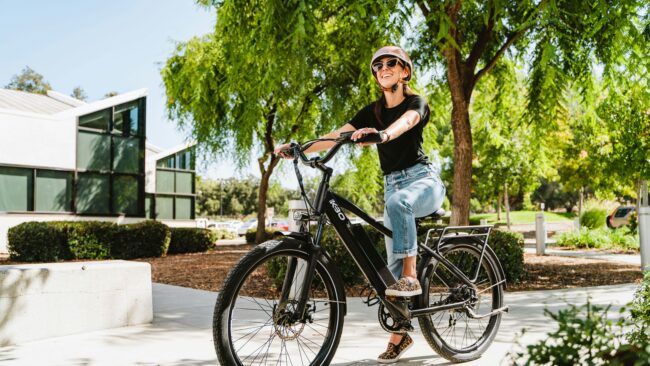Mobility is a very broad concept. In this video podcast, we focus on how people get from A to B and the different means of transport they use. A mobility policy helps companies structure and manage employee mobility. Does your company have a mobility policy that takes all forms of mobility into account?
Employers are responsible for the well-being and safety of their personnel. Work-related travel is no exception to this: it is up to the employer to identify the risks associated with mobility and take them into account in the mobility policy.
The car and the bicycle are used by many employees for getting to and from work. Alternatives such as other types of bikes, scooters, shared cars and so on are also growing more common, though, so make sure that your mobility policy optimises the conditions for travel with all means of transport.
What needs to be done in terms of risk prevention can vary greatly. If your fleet includes lots of company cars, make sure that they receive regular servicing, for example, so that they are always in good condition. If there are permanent or temporary hazards on the route of employees who cycle to work, as an organisation you should share knowledge of alternative, safe routes. Communication and training also form part of the risk prevention strategy in your mobility policy
Legislators amended the Motor Vehicle Liability Law (WAM Law) in April 2024 to make requirements concerning company fleet insurance clearer to employers. The law determines which motor vehicles must be insured for damage to third parties. To make matters as clear as possible, the law also sets rules on vehicles that are only used on private property.
The obligation to have insurance now applies to all motor vehicles that are used to transport goods or people, regardless of where they are driven. This includes vehicles such as forklifts and tractors on factory sites.
One important point that needs to be considered is insurance for electric bicycles, which are becoming more common in company fleets:
- Third-party liability insurance must be arranged for speed pedelecs.
- For regular electric bicycles, the requirement to insure depends on the maximum speed and the weight. For example, an e-bike with a throttle or one that can go faster than 25 km/h requires insurance.
There are still some exemptions from the insurance obligation, such as vehicles that have a maximum speed of 6 km/h and weigh less than 100 kg, and certain pallet trucks and motorised wheelchairs.
We advise companies to check whether their vehicles are already insured and whether these policies comply with the new WAM Law. If vehicles are not yet insured, this must be arranged as soon as possible. You can contact us for advice to ensure that your organisation is complying with the law.



